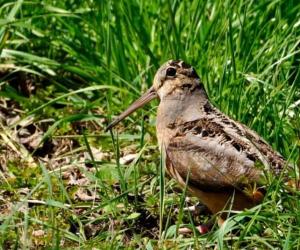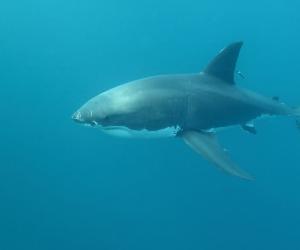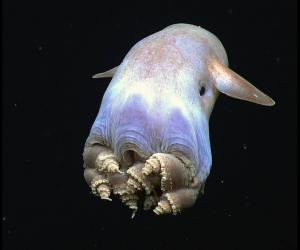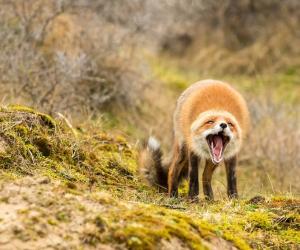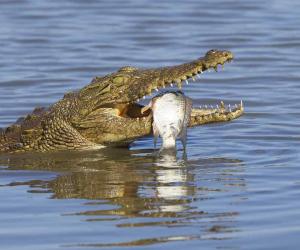How Fast Do Roadrunners Run? Can They Also Fly?
are large ground birds in the family. They inhabit desert regions in and where they mate for life and prey on rodents, , and snakes. We know roadrunners clock up tremendously fast speeds, but exactly how fast do roadrunners run and can they fly as well? Let’s find out!
How Fast Is A Roadrunner?
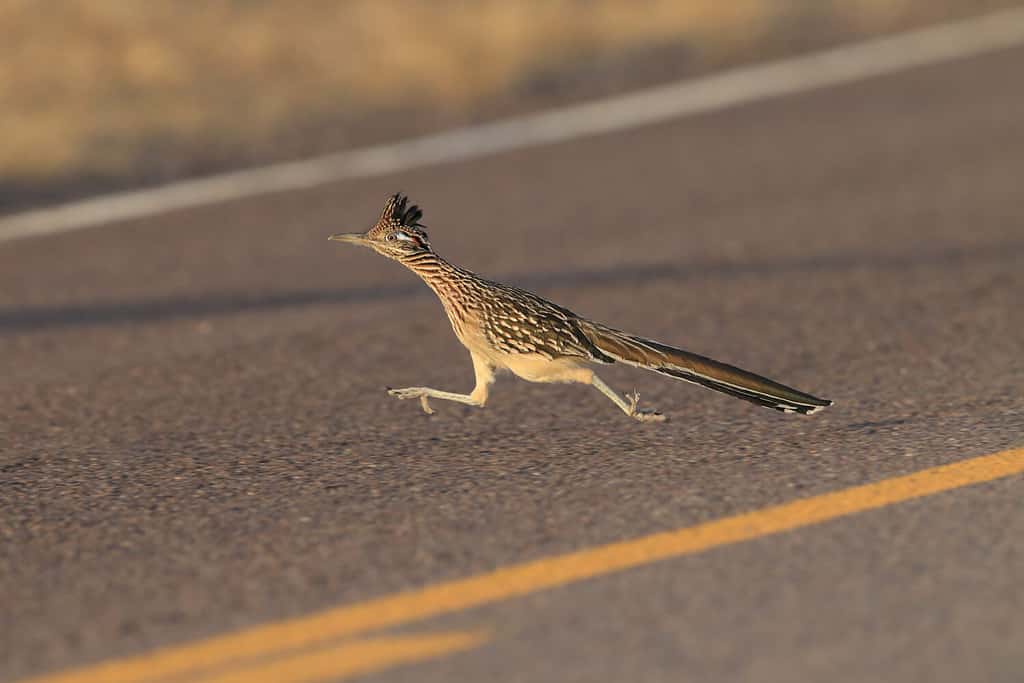
©Frank Fichtmueller/Shutterstock.com
Looney Tunes showed us Roadrunner (meep-meep) was swift on his feet, but how fast exactly? Well, roadrunners are classified into two species:
- Greater roadrunner Geococcyx californianus
- Lesser roadrunner Geococcyx velox
The greater roadrunner is a slightly larger bird, so it’s a bit faster. At full sprint, a greater roadrunner can reach 26 miles per hour (41km/h) and the lesser roadrunner reaches 20 miles per hour (32km/h).
For comparison, the average person can sprint at 12 to 18 mph. Olympic sprinter Usain Bolt topped out at 27.33 mph, just a little faster than greater roadrunner.
Roadrunners are the on earth that retains the ability to fly (more on that later). Three-week-old roadrunner chicks can actually outsprint predators and catch their own food. Amazing. It’s no wonder they’ve earned the common name “roadrunner”.
Why So Fast?
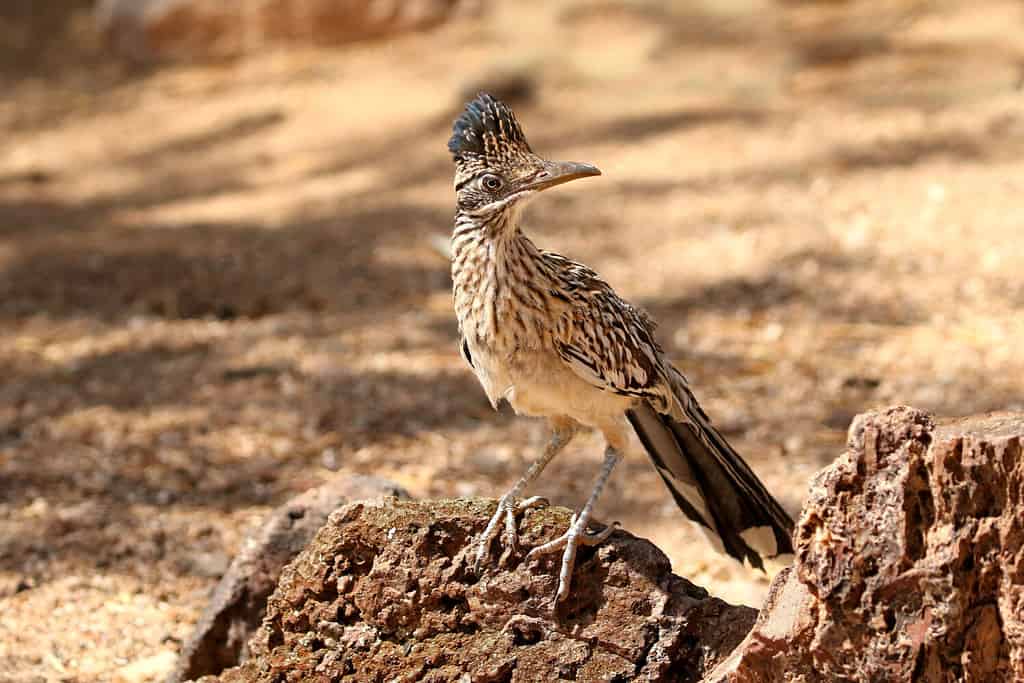
©J Curtis/Shutterstock.com
Roadrunners balance using their long tail feathers that stick out to create an effective steering mechanism, brake, and equalizer when making sharp turns, but it’s their incredible feet that enable such vast turns of speed.
At the tips of their long and epically strong legs, roadrunners have zygodactyl feet with two toes pointing forward and two pointing backward. Their easy-to-identify track marks leave a small X-shaped footprint in the dust.
Roadrunners evolved such astonishing speed for two reasons. The first is to outrun predators such as speedy coyotes. Sources suggest reach between 20 and 42 miles per hour over short distances. Other roadrunner predators include raccoons, , and domestic cats, if they can catch one of course.
The second reason is so roadrunners could catch brisk-footed lizard, insect, , and rodent prey.
Roadrunner Appearance
Two-foot-long greater roadrunners are only a few inches longer than lesser roadrunners. Both species have long thin legs, long hooked beaks, and black, brown, and white speckled feathers that create camouflage in their native desert regions. The lesser roadrunner’s feathers appear slightly lighter in color.
Roadrunner wingspans stretch 17-24 inches, but despite the fact they are the largest cuckoo species in North America, a roadrunner only weighs 7.8 to 19 oz. Their lightweight frame boosts their high-speed racing.
Males and females proudly display a shaggy crest atop their heads, which they puff up to communicate with other roadrunners.
Due to their excellent camouflage, and swift turn of speed, most folks hear roadrunners rather than see them. They make a variety of “coo” sounds, plus alarm buzzes and clacking noises that warn others when danger approaches.
Roadrunner Diet
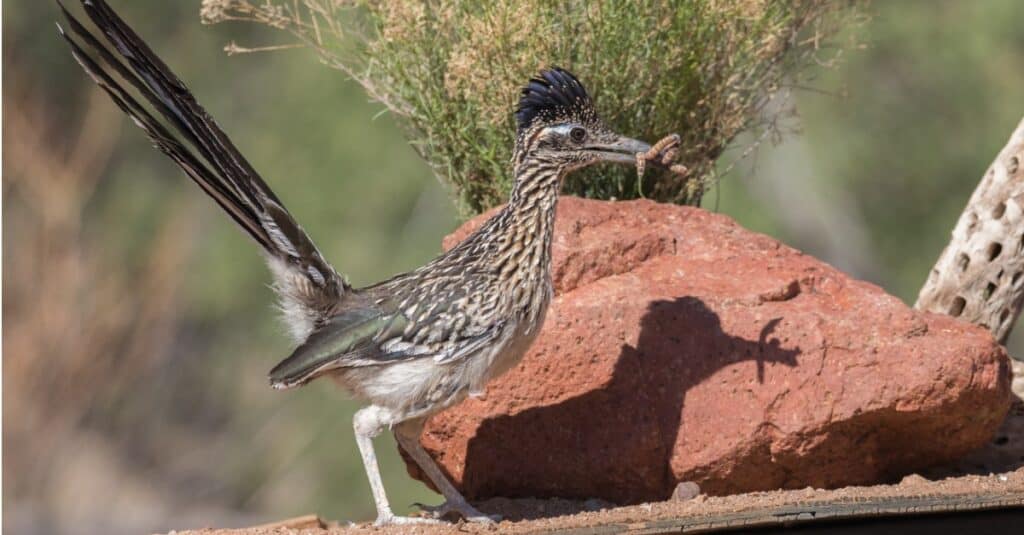
©iStock.com/Dee Carpenter Photography
In their desert environment, , reptiles, small birds, and . Pretty much whatever is available in that harsh environment is fair game to roadrunners, including eggs, venomous rattlesnakes, and with their incredibly painful stings.
However, roadrunners also eat vegetation, seeds, nuts, and flowers. Water is scarce in desert regions, so roadrunners have evolved to obtain liquid from their prey.
It’s no surprise that roadrunners utilize their incredible speed to catch prey!
A roadrunner walks swiftly at all times with a beady eye on their surroundings. Once prey is spotted, a roadrunner does not hang about, but immediately chases it. Once caught, a roadrunner either swallows the unfortunate victim whole or stuns it with a series of sharp pecks before smashing it against rocks. This elongates the victim, making it easier to swallow.
When these amazing birds capture a snake or lizard too large to swallow in one gulp, they can partially swallow their prey. Once part of the victim is digested, they gradually swallow the rest. For example, a roadrunner might partially swallow a , but the tail will dangle from its beak until the head is digested. Then, the roadrunner gobbles down a little more, and so on.
Do Roadrunners Really Eat Rattlesnakes? How?
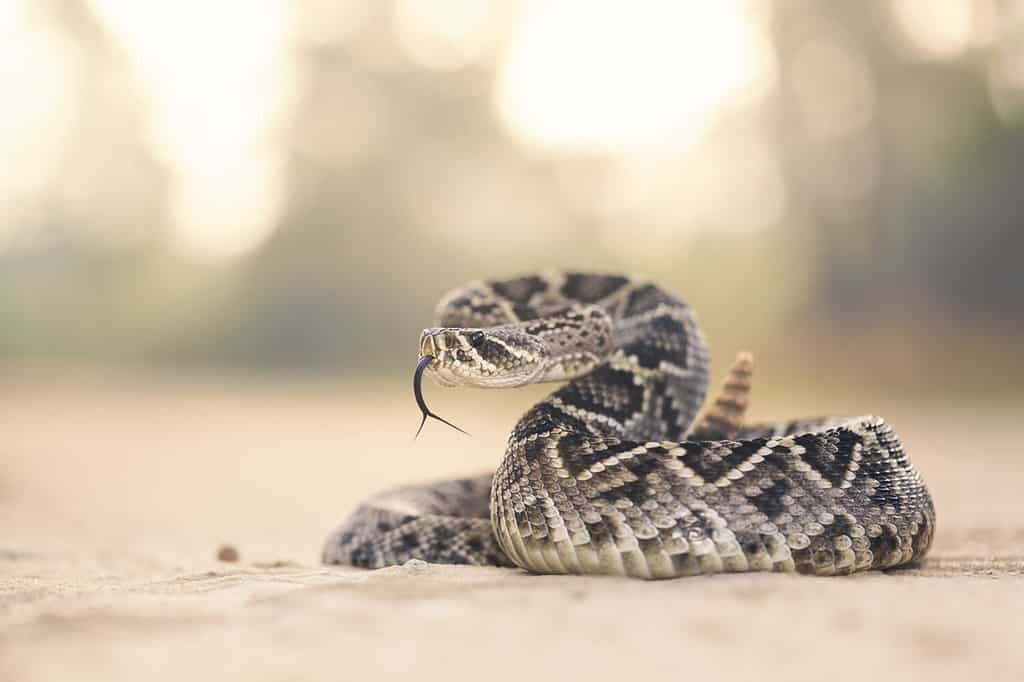
©Kristian Bell/Shutterstock.com
Yes, roadrunners do and it’s often a team effort. One roadrunner distracts the snake by jumping up and down, so its mate can run in and peck the snake’s head or simply grab hold with it’s hooked beak. Larger snakes receive the rock-bashing treatment, but juveniles go down the hatch whole.
However, these incredible birds would rather spend less energy hunting small, easier-to-kill prey like , mice, and small lizards. A dinner is most likely to occur if their options are limited.
Mating and Reproduction
Roadrunners live for seven to eight years and choose life partners, even though they’re solitary birds that don’t usually live in flocks or groups. On occasion, when a group does live together, it’s aptly named a “marathon” or a “race” of roadrunners.
Male roadrunners put on a good show for their prospective wife. A male wags his long, strong tail, bows, and coos in courtship. Some males dangle food near a female to entice her to dinner. Smooth moves Mr Roadrunner!
In very dry regions, roadrunners only lay one clutch of eggs in spring, but in rainier areas, a second clutch in fall is common. Because roadrunners are members of the cuckoo family, they’re often called ground cuckoos, they occasionally brood parasite other birds’ nests.
A is built from sticks and dried grass, around 2-10 feet off the ground, in a tree or cactus. In general, they build it near a flat, open space that offers plenty of running room.
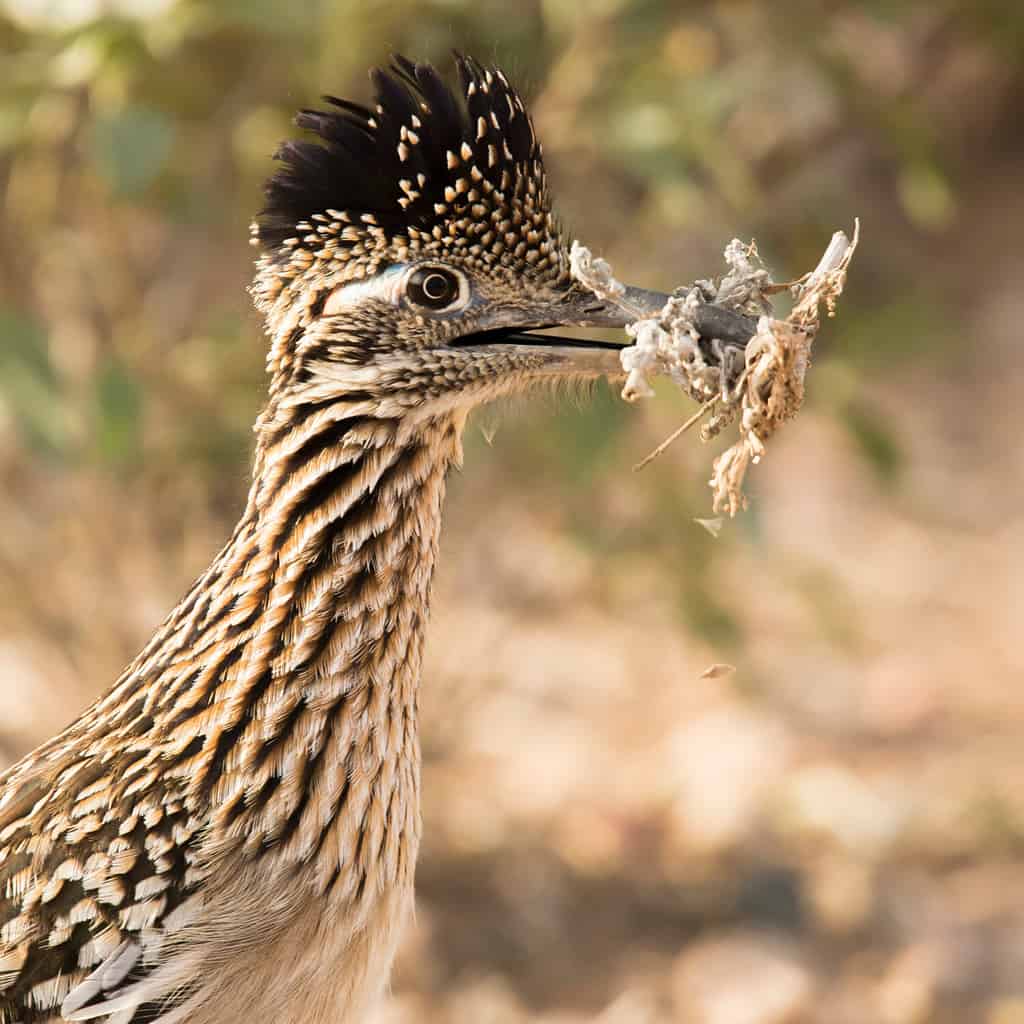
©AZ Outdoor Photography/Shutterstock.com
Where Do You Find Roadrunners?
Great roadrunners are native to southern California, , New Mexico, Oklahoma, Texas, and north . More southerly lesser roadrunners live in southern Mexico and Central America. Both species inhabit grasslands, brushlands, and desert regions.
The greater roadrunner is and Native Americans honored them, considering their presence lucky. Roadrunner feathers warded off evil spirits and their tracks led the lost back to the road. Their distinctive X-shape tracks replicated on indicate Native Americans’ interest in roadrunners.
Can Roadrunners Fly?
Yes, roadrunners can fly, but not any great distance.
Even though they’re considered the fastest land bird that can also fly, in reality, roadrunners can leap large distances and prolong their altitude with enthusiastic wing flaps. This enables capture and predator evasion. It also helps a roadrunner gain elevation to sight-hunt prey on the ground.
Roadrunners don’t have a breastbone keel like flying birds. A bird’s keel is called a carina and it’s the point where flying birds’ large pectoral muscles join their skeleton. Roadrunners’ tiny pecs and short rounded wings enable a little flight, but not over sustained distances.
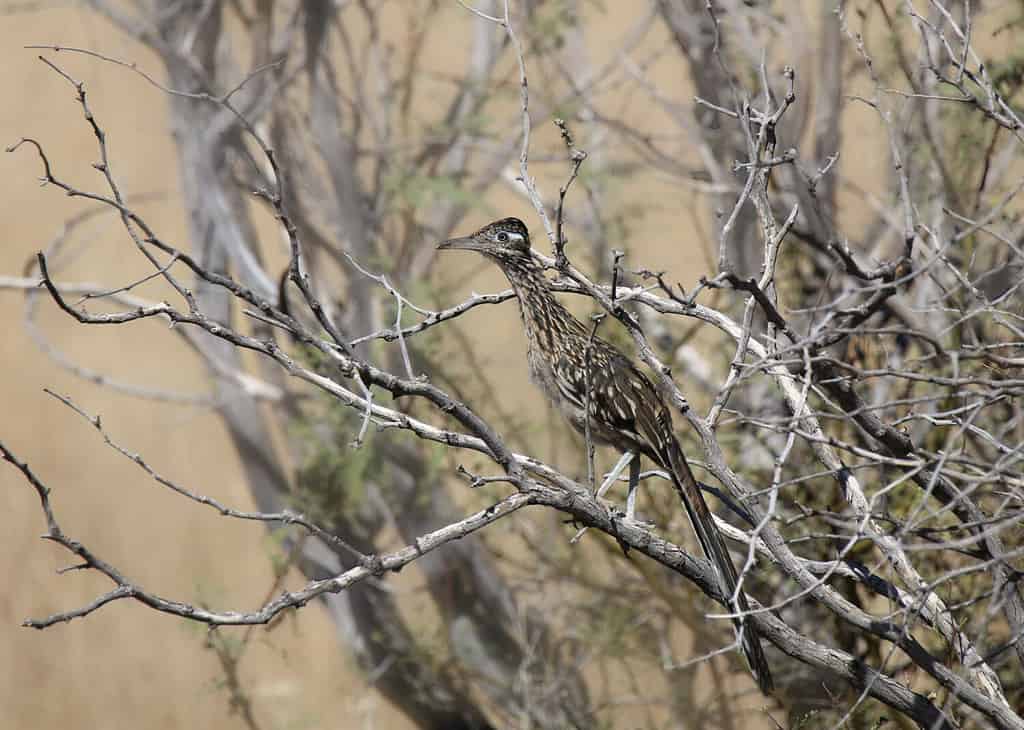
©vagabond54/Shutterstock.com
Can Roadrunners Actually Outrun a Coyote?
Despite Looney Tunes’ portrayal of Roadrunner and Wile E Coyote, where hapless Wile. E never gets his bird, in real life, coyotes regularly catch and eat roadrunners.
Coyotes can run faster. Their 40 mph simply outstrips a roadrunner’s 26 mph, however, roadrunners have a few tricks up their wings.
They can swerve in the blink of an eye to evade swifter coyotes, and because they’re smaller, they can hide beneath objects that coyotes can’t. Roadrunners also utilize their limited flying capacities to reach off-the-ground perches.
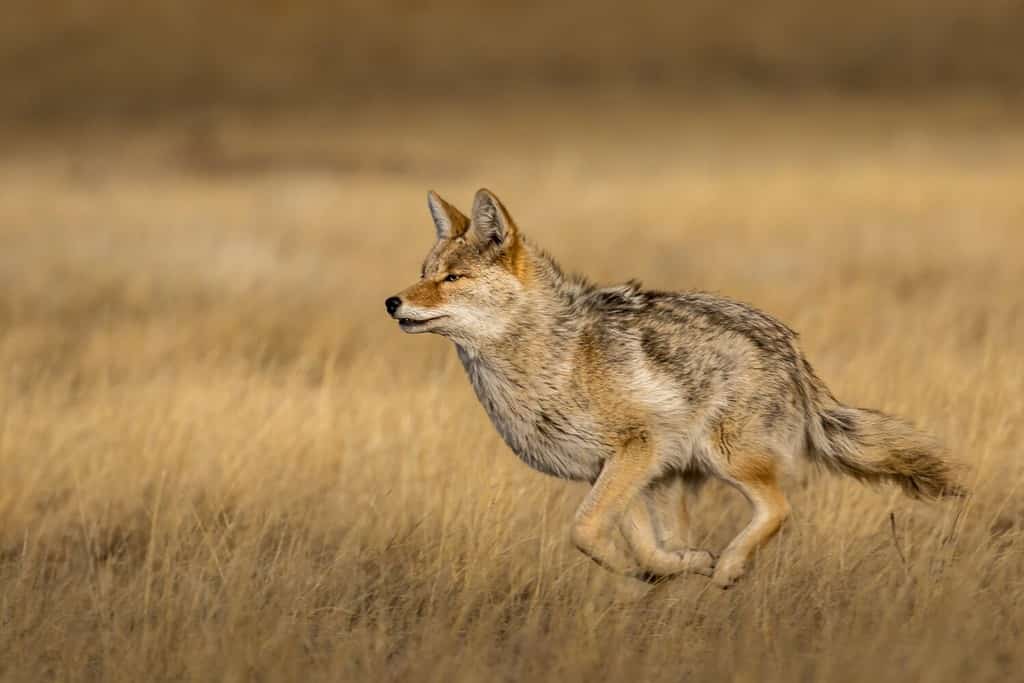
©Dennis Laughlin/Shutterstock.com
How Fast Is A Roadrunner?
How fast can a roadrunner run is a tongue twister for sure, but the answer is straightforward. The fastest known speed clocked up by a greater roadrunner is 26 mph, and the lesser roadrunner manages a swift 20mph.
That makes them faster than the average human sprinter, but not as swift as a coyote’s speedy 40 mph. Nevertheless, a roadrunner’s astounding turn of speed is remarkable for such a small, lightweight bird, not to mention their incredible killing techniques and rather disturbing method of partial prey digestion.
Roadrunners are not the comical bird Looney Tunes created, their heritage is pretty evident!
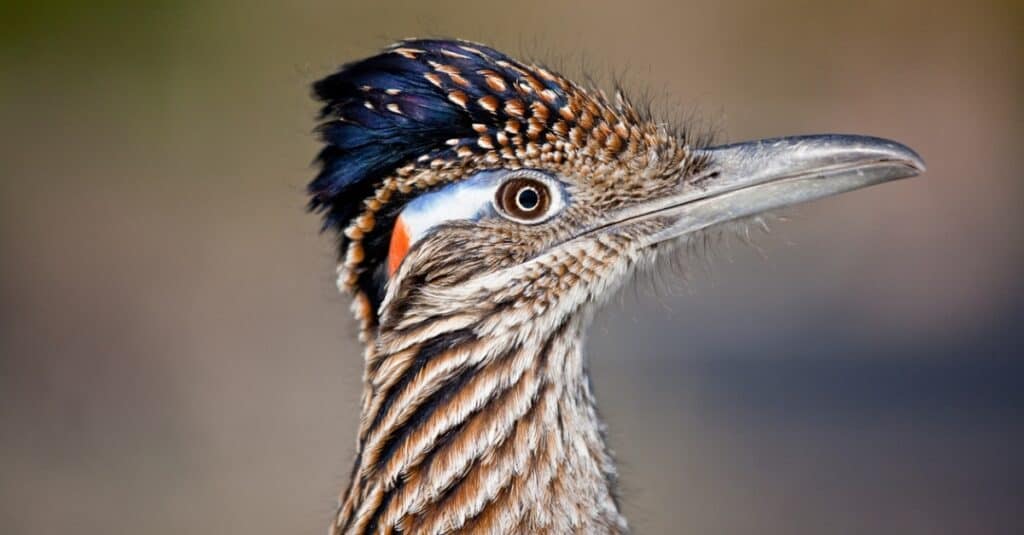
©iStock.com/jzabloski
